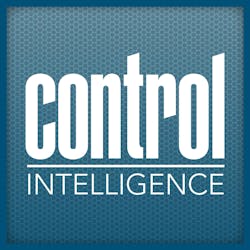In this episode of Control Intelligence, written by contributing editor Joey Stubbs, editor-in-chief Mike Bacidore explains how variable frequency drives provide efficiency, reliability and safety in manufacturing.
Transcript
In manufacturing, where every Watt counts and downtime is the enemy of profit, the spotlight is firmly fixed on efficiency, reliability and safety. And in this pursuit, one technology has emerged above others: variable frequency drives (VFDs).
Although they were originally invented in the 1960s, VFDs began making their appearance in automation and other industries in the early 1980s and have remained an industry staple ever since. Much has changed since then, but what are they, and what are the latest advancements in this fantastic technology?
A VFD’s purpose is to regulate the speed of an ac electric motor by adjusting the frequency and voltage of the power supplied to the motor instead of running with a fixed input voltage and frequency as is common with ac motors. This means they can precisely match the connected motor's speed to the task at hand, eliminating the need for energy-wasting throttling mechanisms. Over the past decade, VFDs have undergone a remarkable transformation, offering unparalleled energy savings, compact form factors, heightened reliability and advanced safety features that are helping revolutionize the manufacturing industry.
In the past few years where “sustainability” has not just become a buzzword, but a business imperative, VFDs have emerged as the poster child for energy efficiency in manufacturing. The past decade has witnessed a quantum leap in efficiency, thanks to advancements in power electronics and control algorithms. Variable frequency drives boast efficiency ratings that were once deemed unattainable, helping manufacturing facilities slash their energy bills while reducing their carbon footprints. With energy consumption often being one of the largest operational expenses, the significance of this cannot be overstated.
Additionally, as with many electronic technologies, VFDs have become more compact over the years. Denser electronic packages, smaller and more powerful power electronic components, multi-layer printed circuit boards (PCBs) and more compact integrated circuit chips have all driven the size of VFD packages down. This translates into a smaller VFD footprint, enabling more of them to be populated into the same enclosure, or the ability to use a smaller enclosure for the same number of drives. Both of these result in money savings.
At the same time, they are getting smarter with enhanced ease of use and user-friendly troubleshooting features. Fault codes and onboard troubleshooting tips help the customer replace the right part and get it up and running sooner. In the high-stakes world of manufacturing, downtime is not just an inconvenience, it is a costly nightmare. This is where the reliability of VFDs comes into play. Traditionally, concerns lingered around the longevity and robustness of these devices, but recent years have seen monumental strides in reliability and improved mean time between failures (MTBF).
Variable frequency drives are built to withstand the rigors of industrial environments, with enhanced thermal management systems, robust enclosures and advanced diagnostic capabilities. Predictive maintenance features, enabled by the integration of sensors and cloud-based analytics, allow for proactive identification of potential issues before they become catastrophic failures.
Furthermore, the advent of fault-tolerant designs has added an extra layer of resilience, ensuring that manufacturing processes remain uninterrupted even in the event of certain component failures. This reliability translates directly into increased uptime, driving productivity and maximizing profitability.
Of course, in the manufacturing industry safety is paramount. And while VFDs have long been lauded for their energy-saving attributes, recent advancements have ushered in a new era of safety features that prioritize the well-being of both personnel and equipment.
From integrated motor and load protection to comprehensive fault detection and emergency-stop functionalities, VFDs are equipped with a suite of safety features designed to mitigate risks and ensure compliance with stringent safety standards. Moreover, advancements in insulation technology and fault-clearing capabilities have bolstered the safety profile of VFDs, minimizing the likelihood of electrical hazards and catastrophic failures.
Additionally, VFDs are now coming equipped with the same Safety Integrity Level (SIL) functional safety commands that were originally developed for and found on servo drives. A suite of safety-rated commands allows the drives to not only safely stop, but maintain a safe speed or a safe torque. Additional safety instructions will most certainly be added to the next generation of VFDs.
As we look to the future, the trajectory of VFDs is poised for even greater innovation. From the integration of artificial intelligence and machine-learning algorithms for predictive maintenance to the proliferation of IoT-enabled connectivity for remote monitoring and control, the possibilities are boundless.
The evolution of VFDs over the past decade has been nothing short of extraordinary. From energy savings to reliability and safety advancements, these devices have helped reshape the manufacturing landscape, driving efficiency, productivity and sustainability. As engineering departments and decision-makers plan the course for their manufacturing facilities, one thing is abundantly clear: with VFDs, the future looks brighter than ever before.
About the Author

Control Intelligence
A Control Design Podcast
Control Intelligence is a Control Design podcast that goes deep inside the automation and technology that machine builders, system integrators and end users rely on to keep production humming efficiently. New episodes come out every Monday, and download all episodes by Apple Podcasts or Podbean.

Leaders relevant to this article:
